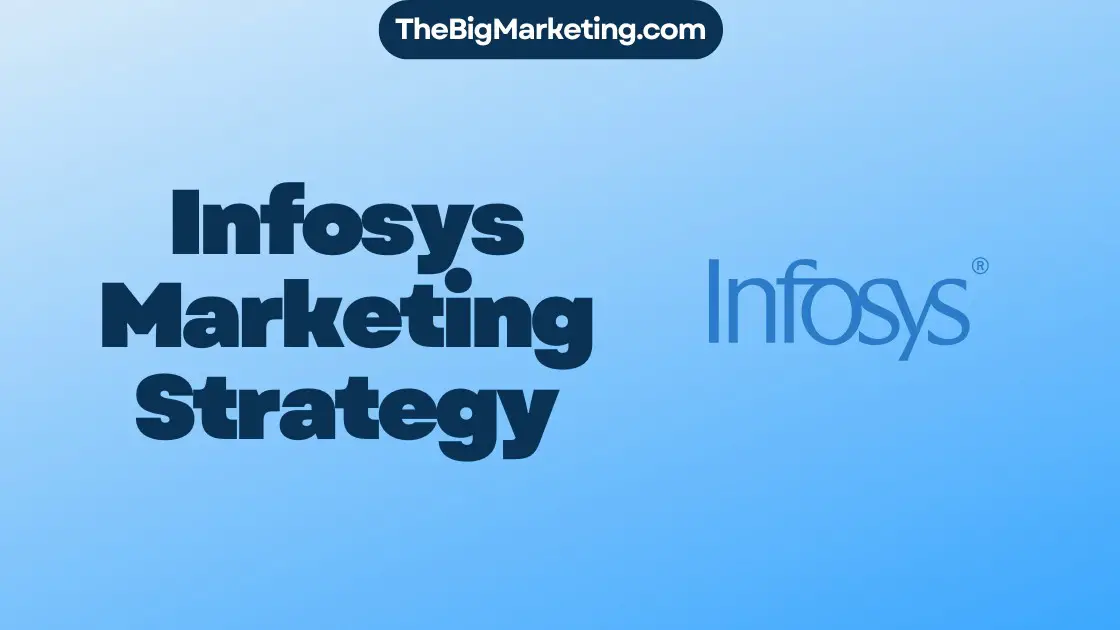Adidas, the renowned sports and fashion brand, has captured the global market with its innovative marketing strategies. In this article, we will delve into Adidas’ global marketing strategy, exploring its tactics, brand promotion, and advertising campaigns. By examining Adidas’ journey, we aim to shed light on how the brand has expanded its reach and engaged with consumers worldwide.
Adidas’ marketing tactics have played a pivotal role in its success, allowing the brand to stay ahead of the competition. Through strategic brand promotion, Adidas has effectively positioned itself as a leader in the industry, captivating the hearts of sports enthusiasts and fashion-forward individuals alike. The brand’s advertising campaigns have left a lasting impact, effectively conveying its values and resonating with its target audience.
Throughout its history, Adidas has continuously adapted to market demands, leveraging its iconic three stripes logo to distinguish itself from competitors. This visual identity has become synonymous with excellence and serves as a testament to the brand’s commitment to quality and performance.
Moreover, Adidas’ extensive sponsorships and endorsements have propelled its global reach. By partnering with legendary athletes and prominent teams, the brand has solidified its reputation as a premier sports company. These collaborations not only expand Adidas’ influence but also reinforce its authenticity and credibility.
As Adidas embraces the intersection of sports and fashion, its marketing approach has shifted to cater to the growing demand for athletic-inspired streetwear. Collaborations with influential personalities and celebrities have allowed Adidas to make a statement in the fashion world, appealing to a broader audience beyond sports enthusiasts.
In recent years, Adidas has placed a strong emphasis on sustainability and social responsibility. The brand is actively pursuing initiatives to reduce its environmental footprint and embrace ethical practices, resonating with consumers who value conscious consumption. By aligning its marketing efforts with these values, Adidas has further strengthened its position as a forward-thinking and responsible brand.
Key Takeaways:
- Adidas’ global marketing strategy focuses on innovative tactics, brand promotion, and impactful advertising campaigns.
- The brand’s iconic three stripes logo represents its commitment to excellence and serves as a vital part of its visual identity.
- Adidas’ extensive sponsorships and endorsements contribute to its global reach and credibility in the sports industry.
- As Adidas embraces the fusion of sports and fashion, its marketing approach includes collaborations and partnerships with influential personalities.
- The brand’s commitment to sustainability and social responsibility has further strengthened its position in the market.
The Early Years of Adidas
Adidas, founded in 1949 by Adolf “Adi” Dassler, has a rich history rooted in innovation and product quality. From its inception, Adidas placed a strong emphasis on pushing the boundaries of athletic footwear and apparel.
One of the brand’s notable innovations came in 1954 with the introduction of the first screw-in stud football boot. This groundbreaking footwear design revolutionized the game, providing players with enhanced traction and maneuverability on the field.
Adidas’ commitment to innovation and performance laid the foundation for its success in both the sports and fashion industry. The brand’s relentless pursuit of creating high-quality products that perform at the highest level continues to drive its growth and popularity today.
Adi Dassler, the founder of Adidas, was a visionary entrepreneur who understood the importance of merging cutting-edge technology with functional design. His dedication to craftsmanship and product quality has shaped the Adidas brand into what it is today.
The Three Stripes Logo
The iconic three stripes logo of Adidas was introduced in 1952. This timeless logo has become synonymous with Adidas’ commitment to excellence and remains a vital part of its visual identity.
The three stripes on the logo symbolize more than just a design element. They represent a mountain, embodying the challenges that athletes face in their pursuit of greatness, and the goals they strive to achieve. This symbolism reflects Adidas’ dedication to supporting athletes and their relentless pursuit of excellence in their respective sports.
Over the years, the three stripes logo has been recognized and embraced by athletes and consumers alike, solidifying its position as a symbol of quality, performance, and authenticity. It serves as a visual reminder of Adidas’ brand excellence and the company’s ongoing commitment to delivering innovative products and empowering athletes worldwide.
The Rise of Sponsorships
In the 1960s and 1970s, Adidas recognized the immense potential of athlete endorsements and sponsorships. By collaborating with legendary athletes like Muhammad Ali and Franz Beckenbauer, Adidas solidified its reputation as a premier sports brand and gained global recognition.
These partnerships were not only a testament to the exceptional quality of Adidas products but also played a pivotal role in enhancing the brand’s global reach. Aligning with top athletes and teams worldwide allowed Adidas to connect with diverse audiences, fostering a sense of credibility and trust.
The strategic athlete endorsements and sponsorships formed a powerful marketing strategy, bolstering Adidas’ position as a dominant force in the sports industry. By associating with renowned athletes, Adidas effectively conveyed its commitment to excellence and performance, attracting athletes and sports enthusiasts alike.
Furthermore, these partnerships transcended traditional marketing tactics and formed genuine connections with consumers worldwide. Fans admired and emulated their sports idols, often seeking to wear the same gear and apparel as their favorite athletes. By capitalizing on this consumer behavior, Adidas experienced exponential growth and increased brand loyalty.
| Athlete/Team | Sport | Effectiveness of Endorsement |
|---|---|---|
| Muhammad Ali | Boxing | Revolutionized sports endorsement and put Adidas in the spotlight |
| Franz Beckenbauer | Soccer | Strengthened the connection between Adidas and soccer, paving the way for future collaborations |
| Stan Smith | Tennis | Popularized the iconic Adidas Stan Smith tennis shoes, boosting sales and brand visibility |
Through innovative marketing strategies and strategic sponsorships, Adidas was able to penetrate global markets and establish itself as a household name. The brand’s commitment to excellence, performance, and genuine connections with athletes and consumers has been the driving force behind its success.
Key Takeaways:
- Adidas embraced athlete endorsements and sponsorships in the 1960s and 1970s.
- Collaborations with iconic athletes like Muhammad Ali and Franz Beckenbauer solidified Adidas’ reputation as a premier sports brand.
- Strategic partnerships enhanced Adidas’ global reach and credibility.
- Athlete endorsements allowed Adidas to connect with diverse audiences and attract athletes and sports enthusiasts.
- Adidas capitalized on consumer behavior by tapping into the admiration and emulation of sports idols.
The Shift Towards Fashion
While Adidas initially focused on sports performance, the brand recognized the growing demand for sportswear as a fashion statement. In the 1980s, Adidas collaborated with iconic hip-hop group Run-DMC, marking its entry into streetwear. This collaboration laid the foundation for Adidas’ enduring presence in the intersection of sports and fashion.
Adidas understood the evolving consumer preferences and the desire for stylish athletic apparel that could be worn beyond the sports field. Collaborating with Run-DMC not only showcased Adidas’ commitment to embracing cultural influences but also helped drive the brand’s popularity in the hip-hop and streetwear communities.
The collaboration with Run-DMC resulted in the iconic song “My Adidas,” which became an anthem for urban fashion and solidified the brand’s street cred. This partnership broke barriers between music and fashion, inspiring a new generation of artists to embrace sportswear as a fashion statement.
The Rise of Adidas Collaborations
Following the success of Run-DMC collaboration, Adidas continued to forge alliances with influential figures and brands from various industries. These collaborations allowed Adidas to merge the worlds of sports and fashion, creating unique and highly sought-after products that catered to a wide range of consumers.
Collaborations with designers such as Stella McCartney, Alexander Wang, and Pharrell Williams brought a fresh and contemporary twist to Adidas’ sportswear offerings. These partnerships not only elevated the brand’s status in the fashion world but also broadened its appeal to a diverse customer base.
Adidas’ collaborations with celebrities and influencers further solidified its presence in the fashion landscape. The brand’s partnership with Kanye West resulted in the creation of the highly popular Yeezy line, which gained a cult-like following and became synonymous with streetwear fashion.
The Adidas Fashion Statement
Adidas has successfully positioned itself as a fashion-forward brand that seamlessly blends performance and style. The brand’s streetwear collections, such as Adidas Originals, have become a defining fashion statement, embraced by not only athletes and sports enthusiasts but also by fashion-conscious individuals across the globe.
Adidas’ ability to adapt to the changing fashion landscape and collaborate with influential figures has allowed it to continuously push boundaries and remain at the forefront of the fashion industry. The brand’s commitment to innovation, quality, and style has made it a go-to choice for those seeking both functionality and trend-setting designs.
| Adidas Streetwear Collaborations | Year |
|---|---|
| Run-DMC | 1986 |
| Stella McCartney | 2005 |
| Alexander Wang | 2016 |
| Pharrell Williams | 2014 |
| Kanye West (Yeezy) | 2015 |
Challenges and Rebirth
In the late 20th century, Adidas faced significant challenges, including increased competition and financial difficulties. However, under the visionary leadership of CEO Herbert Hainer, the company underwent a remarkable revitalization in the early 2000s.
Recognizing the need for change, Adidas made strategic investments in marketing, innovation, and acquisitions. These efforts propelled the brand forward, positioning it for strong financial growth and market expansion.
One notable acquisition during this period was the purchase of Reebok in 2005. This bold move not only expanded Adidas’ product portfolio but also helped to consolidate its position as a leading global sportswear company.
| Year | Major Acquisitions |
|---|---|
| 2005 | Reebok |
The acquisition of Reebok opened doors to new consumer segments and diversified revenue streams. It allowed Adidas to tap into Reebok’s loyal customer base and leverage its strength in the fitness and lifestyle market.
With an enhanced product portfolio, Adidas experienced remarkable financial growth and market expansion, solidifying its position as a fierce competitor in the industry.
Sustainability and Social Responsibility
In recent years, Adidas has demonstrated a strong commitment to sustainability and social responsibility. The company has launched various initiatives to minimize its environmental impact and promote ethical practices throughout its supply chain.
End Plastic Waste Initiative
As part of its sustainability efforts, Adidas introduced the “End Plastic Waste” initiative, aiming to tackle the global issue of plastic pollution. The company is actively working towards eliminating virgin plastic from its supply chain and products.
Recycled Polyester Commitment
Adidas has set an ambitious goal to use only recycled polyester in its products by 2024. By incorporating recycled materials into its manufacturing processes, the company significantly reduces its environmental footprint and promotes a circular economy.
Ethical Labor Practices
In addition to its environmental initiatives, Adidas places a strong emphasis on ethical labor practices. The company has implemented comprehensive guidelines and audits to ensure fair and safe working conditions for all individuals involved in its supply chain.
Reducing Environmental Footprint
Adidas strives to minimize its environmental impact by reducing energy consumption, water usage, and waste generation. The company has implemented sustainable manufacturing practices, such as using eco-friendly materials and optimizing production processes to reduce carbon emissions.
Through such initiatives, Adidas demonstrates its commitment to a more sustainable future, in line with the growing demand for environmentally conscious and socially responsible brands.
| Sustainability Initiatives | Ethical Practices | Environmental Footprint |
|---|---|---|
| End Plastic Waste Initiative | Ethical labor guidelines | Reduced energy consumption |
| Recycled polyester commitment | Audits for supply chain transparency | Water conservation efforts |
| Safe working conditions | Waste reduction strategies |
The Importance of Marketing for Adidas
Marketing plays a crucial role in the success of Adidas. The brand leverages a variety of innovative marketing campaigns to create product awareness, reach its target audience, and maintain a positive brand image. By collaborating with high-profile athletes and celebrities, Adidas inspires and motivates its audience by showcasing the dedication and passion of these influential figures.
One of the key objectives of Adidas’ marketing efforts is to promote its new collections and lines. Through strategic campaigns, the brand effectively communicates the features, benefits, and unique selling points of its products. By doing so, Adidas not only elevates its credibility among consumers but also ensures that customers have a clear understanding of the value proposition offered by its offerings.
Furthermore, Adidas understands the importance of resonating with its target audience. The brand conducts extensive market research to identify the preferences, needs, and aspirations of its customers. This valuable insight enables Adidas to tailor its marketing campaigns to appeal directly to its intended audience, fostering a strong emotional connection and brand loyalty.
Marketing also plays a vital role in differentiating Adidas from its competitors in the crowded sportswear market. By employing creative and visually appealing advertising strategies, Adidas captures attention and stands out in consumers’ minds. The brand’s marketing campaigns not only showcase the quality and performance of its products but also emphasize the lifestyle and values associated with the Adidas brand.
Overall, Adidas recognizes that effective marketing is instrumental in driving brand awareness, engaging the target audience, and ultimately contributing to its continued success. By leveraging strategic partnerships, inspiring storytelling, and visually captivating campaigns, Adidas maintains its position as a leading player in the global sportswear and fashion industry.
Key Marketing Campaigns of Adidas
Adidas has implemented several impactful marketing campaigns over the years, showcasing its innovative advertising strategies and the significant brand impact they have achieved. These campaigns effectively communicate Adidas’ core values and resonate with the target audience, solidifying the brand’s position in the sports and fashion industry.
“Impossible is Nothing” Campaign Featuring Muhammad Ali and Prominent Athletes
One of Adidas’ most notable marketing campaigns is the “Impossible is Nothing” campaign. Through powerful storytelling and captivating visuals, this campaign features legendary boxer Muhammad Ali and other prominent athletes who have overcome hurdles to achieve greatness. By emphasizing the importance of determination and perseverance, Adidas inspires consumers to believe in their own potential.
D Rose 3.5 Campaign with High-Jump Contest
Another standout marketing campaign by Adidas is the D Rose 3.5 campaign. This campaign showcases the extraordinary leaping ability of basketball player Derrick Rose. Adidas engaged the audience by creating a high-jump contest, inviting fans to showcase their talent and compete for the highest vertical leap. This interactive campaign not only promoted the D Rose 3.5 basketball shoe but also encouraged consumers to actively participate in the brand’s story.
Adidas Football Campaign Featuring Lionel Messi and Paul Pogba
The Adidas Football campaign, featuring renowned footballers Lionel Messi and Paul Pogba, is a testament to the brand’s successful advertising strategies. Through captivating visuals and compelling storytelling, this campaign captures the essence of dedication, teamwork, and passion that define the sport of football. By associating the Adidas brand with the world’s top football talent, the campaign resonates with football enthusiasts globally.
These are just a few examples of Adidas’ impactful marketing campaigns that have left a lasting brand impact. By leveraging the power of storytelling, engaging visuals, and collaborations with influential athletes, Adidas continues to solidify its position as a leading global sports and fashion brand.
The Adidas Marketing Approach
Adidas takes a unique and impactful marketing approach to connect with its audience and stand out in the competitive sportswear industry. The brand’s marketing strategy revolves around three key elements: brand messaging, visual aesthetics, and high-profile endorsements.
Bridging the Gap with Relatable Storytelling
Adidas understands the power of relatability in capturing consumers’ attention and building emotional connections. Through compelling storytelling, the brand bridges the gap between famous stars and everyday people, creating a sense of inspiration and motivation. By showcasing athletes and individuals who have overcome adversity and achieved greatness, Adidas cultivates a strong brand message that resonates with people from all walks of life.
Incorporating Cause Marketing for Social and Environmental Responsibility
Adidas is committed to making a positive impact beyond the realm of sports. The brand incorporates cause marketing initiatives to promote social and environmental responsibility. By aligning itself with causes that matter to its target audience, Adidas enhances its brand image and showcases its commitment to making a difference. From sustainability initiatives to community outreach programs, Adidas integrates these efforts seamlessly into its marketing campaigns, reinforcing its values and attracting socially conscious consumers.
Visually Appealing Marketing with Authenticity
Adidas combines visual aesthetics with authenticity in its marketing efforts. The brand leverages compelling visuals that capture attention and evoke emotion. Whether it’s through high-quality photography, visually stunning videos, or innovative design elements, Adidas creates visually appealing content that reflects its commitment to excellence. By staying true to its roots while embracing modern trends, Adidas maintains a consistent and engaging visual identity that resonates with its target audience.
Adidas Marketing Approach Overview
| Approach | Description |
|---|---|
| Relatable Storytelling | Engaging narratives that inspire and motivate |
| Cause Marketing | Promoting social and environmental responsibility |
| Visual Aesthetics | Compelling visuals that captivate and resonate |
Achievements and Future Goals
Adidas has experienced remarkable market growth as a result of its effective marketing strategies and dedication to brand development. Through innovative campaigns, collaborations, and a commitment to quality, Adidas has earned its position as a global leader in the sports and fashion industry.
Looking ahead, Adidas has ambitious plans for the future. The brand aims to continue its global expansion, reaching new markets and captivating consumers across the globe. By penetrating untapped regions and engaging with diverse communities, Adidas is poised for further growth and increased market share.
In addition, Adidas recognizes the importance of enhancing consumer engagement. By leveraging cutting-edge technology, personalized experiences, and interactive platforms, Adidas aims to deepen its relationship with consumers. The brand strives to create meaningful connections, inspiring loyalty and driving customer satisfaction.
Furthermore, Adidas is committed to ongoing innovation in the sports and fashion industry. The brand aims to stay ahead of evolving trends and continually push boundaries in design, functionality, and sustainability. By introducing groundbreaking products and pioneering sustainable practices, Adidas seeks to set new industry standards and cement its position as a trailblazer.
As Adidas pursues its future goals, the brand remains dedicated to its core values and mission. Honoring its heritage of excellence, Adidas aims to maintain its position as a global sportswear and fashion powerhouse. By continuously evolving and adapting to changing market dynamics, Adidas is poised to shape the future of the industry, empowering athletes and inspiring consumers worldwide.
Adidas Market Growth
| Year | Market Growth |
|---|---|
| 2017 | 9.8% |
| 2018 | 10.4% |
| 2019 | 11.3% |
| 2020 | 10.2% |
| 2021 | Projected: 8.9% |
Conclusion
Adidas’ global marketing success can be attributed to its innovative approach and strategic collaborations. By leveraging athlete endorsements and partnering with top teams worldwide, the brand has solidified its position as a leading sports and fashion brand. Moreover, Adidas’ commitment to sustainability and ethical practices has resonated with consumers, reinforcing its global impact.
Throughout its evolution, Adidas has stayed true to its core values, adapting to changing market dynamics. By embracing new trends and expanding its global reach, the brand continues to inspire and motivate athletes and fashion enthusiasts alike. Adidas sets an example for other brands seeking to thrive in a competitive market while maintaining a strong brand identity.
In the ever-evolving sports and fashion industry, Adidas remains a powerhouse with a clear vision for the future. With its innovative marketing strategies and dedication to sustainability, the brand is positioned for continued growth and global impact. As consumers seek products that align with their values, Adidas will undoubtedly play a significant role in shaping the industry and meeting the demands of an increasingly conscious market.






